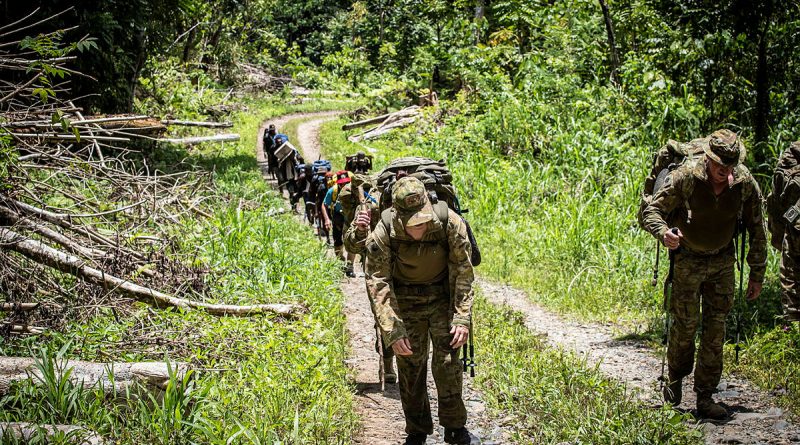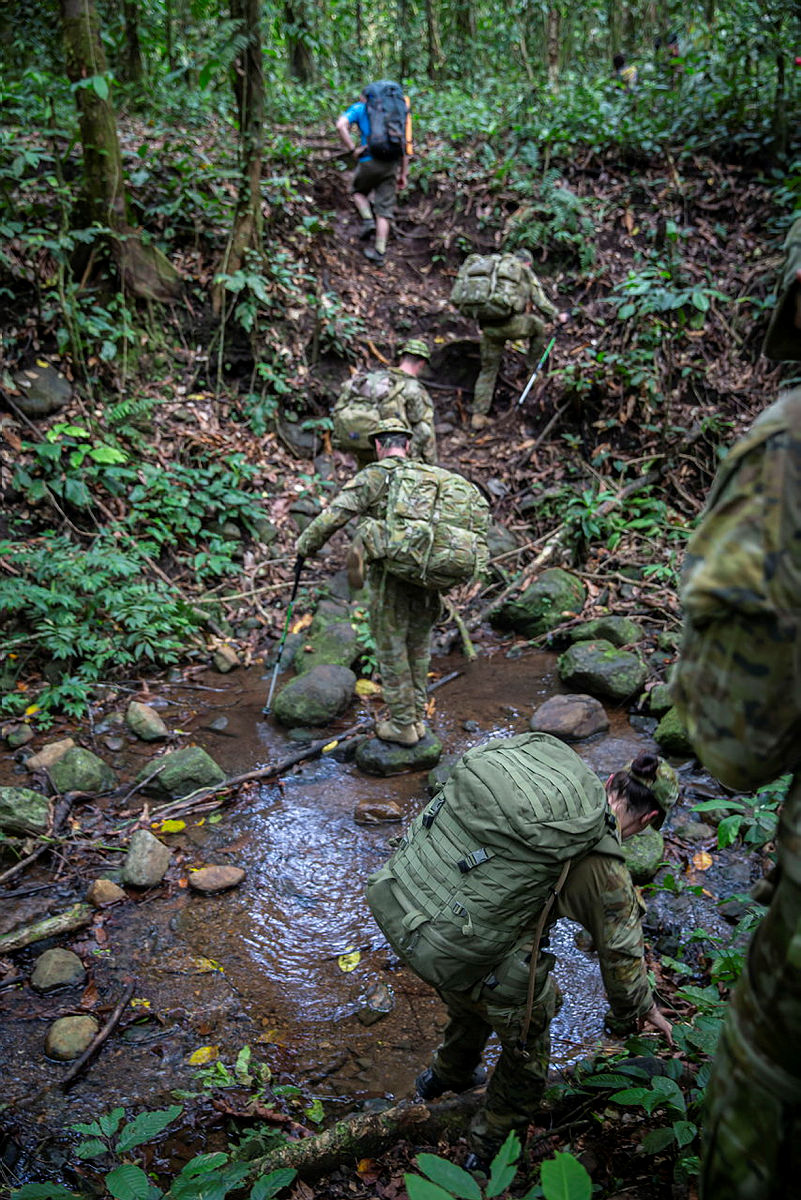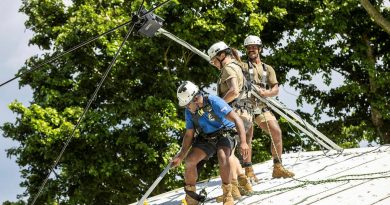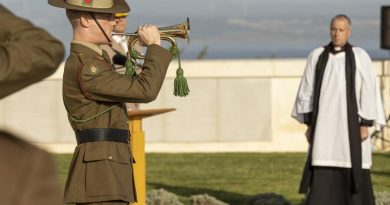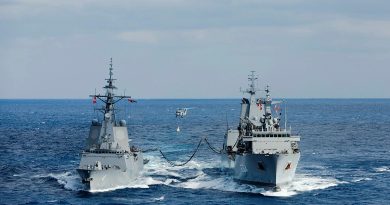Walking in the footsteps of their forefathers
Share the post "Walking in the footsteps of their forefathers"

When the order “every man for himself” was given, Australian soldiers of Lark Force faced a grim choice – stay and be captured or risk the near-impossible by escaping through the unforgiving jungle.
CAPTION: Australian Army Jonathan Church Good Soldiering Award recipients follow Lark Force’s withdrawal route through the jungle between the villages of Dodul and Maranagi in East New Britain, PNG. Story and photos by Corporal Melina Young.
They’d already been in East New Britain a year to observe the area and resist any Japanese incursion, even though they were too small in number to attack an invasion.
The 2/22nd Battalion, Australian Imperial Force, New Guinea Volunteer Rifles’ gun crews and batteries, along with elements of the 2nd/10th Field Ambulance, had arrived to defend airfields critical to Japan’s advance in the southwest Pacific.
Later supported by 24 Squadron, Royal Australian Air Force, the battalion spent months constructing defences before bombing commenced in January 1942.
By January 22, the squadron had been nearly wiped out, forcing them to withdraw.
Left behind, Lark Force awaited the inevitable when the Imperial Japanese Navy invaded via Rabaul’s Simpson Harbour, in Blanch Bay, the very next day.
Ill-equipped and unprepared for the brutal assault, the 1440-strong battalion stood little chance against the 5000 Japanese troops.
The fighting ended within hours, with many Australians fleeing to the north and south coast; some managed to escape to the mainland, while others were captured and massacred.
Eighty-two years after the fall of Rabaul, the four recipients of the 2024 Australian Army Jonathan Church Good Soldiering Award (JCGSA) trekked through the very same rugged terrain their forebears once struggled to survive.
These modern soldiers did not face the malnutrition, malaria, or desperate isolation that plagued World War 2 diggers, but experienced firsthand the dense, unforgiving landscape.
Walking under the jungle canopies provided needed shade, but never seemed to protect them long enough from the harsh sun.
Tree roots formed makeshift steps, or treacherous stumbling hazards for the unwary.
Crossing rivers offered instant relief from the heat, though the temptation to fully submerge was tempered by warnings to keep feet dry, as blisters were quick to form.
CAPTION: Jonathan Church Good Soldiering Award recipients follow Lark Force’s withdrawal route, ensuring not to linger too long in the water following warnings to keep feet dry to avoid blisters.
Local porters from nearby villages, some wearing thongs and others with calloused bare feet, cleared overgrown paths with machetes, much like their legendary forefathers who aided soldiers in WW2.
Their outstretched hand was always ready to assist, a gesture of support that quickly turned strangers into friends.
The hilly terrain tested even the fittest soldiers, leaving them breathing heavily through the dense humid air.
Unlike the men of Lark Force, who often became disoriented and made poor decisions under the relentless pressure of survival and enemy threat, today’s soldiers benefited from modern navigation technology, ensuring they stayed on course.
Exhausted and out of ammo, a group of about 160 Lark Force attempting to evade the Japanese were captured, then murdered at the Tol Plantation.
The bulk of Lark Force’s soldiers were loaded onto Japanese ship Montevideo Maru, which was later sunk with all aboard.
Captured Lark Force officers and some nurses were taken to Japan on another ship where they remained until the war ended.
Six men survived the Tol Plantation massacre with the aid of locals and were later evacuated with 156 soldiers, sailors and civilians on April 12, 1942.
.
.

.
.
Share the post "Walking in the footsteps of their forefathers"

